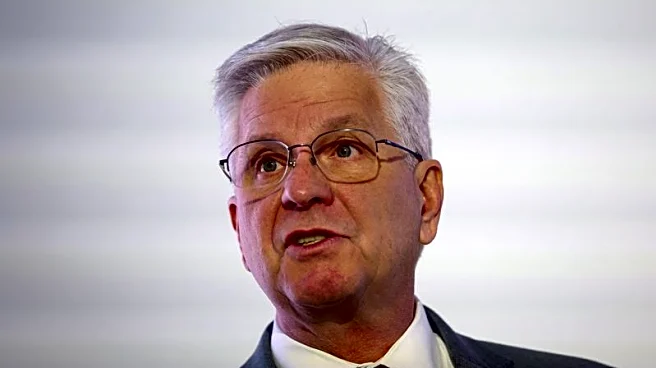What's Happening?
Luxury brands are increasingly relying on 'always on' marketing strategies, characterized by constant collaborations and celebrity endorsements. This approach has led to a sense of overexposure and interchangeability
among brands, diminishing their unique appeal. The strategy, aimed at capturing consumer attention, often results in a cluttered market where brands struggle to differentiate themselves. As consumer sentiment in the U.S. reaches low levels, brands are reevaluating their marketing tactics to focus on more strategic narratives that resonate emotionally with audiences. Successful campaigns, like Moncler's featuring Robert De Niro and Al Pacino, emphasize core brand values and emotional connections.
Why It's Important?
The shift in marketing strategies highlights the need for luxury brands to adapt to changing consumer preferences and market conditions. As consumers become overwhelmed by constant marketing messages, brands that fail to offer distinct and compelling narratives risk losing relevance. This situation presents an opportunity for brands to innovate and create memorable experiences that align with consumer values. The industry's reliance on metrics like earned media value, which prioritize visibility over meaningful engagement, may need reevaluation to better capture consumer sentiment and brand identity.
Beyond the Headlines
The current marketing landscape suggests a potential reset in how luxury brands approach consumer engagement. By focusing on authentic storytelling and emotional connections, brands can differentiate themselves in a saturated market. This approach not only enhances brand loyalty but also aligns with broader cultural shifts towards authenticity and meaningful interactions. As brands explore new metrics to measure success, the emphasis on consumer perception and brand alignment could redefine marketing strategies in the luxury sector.












